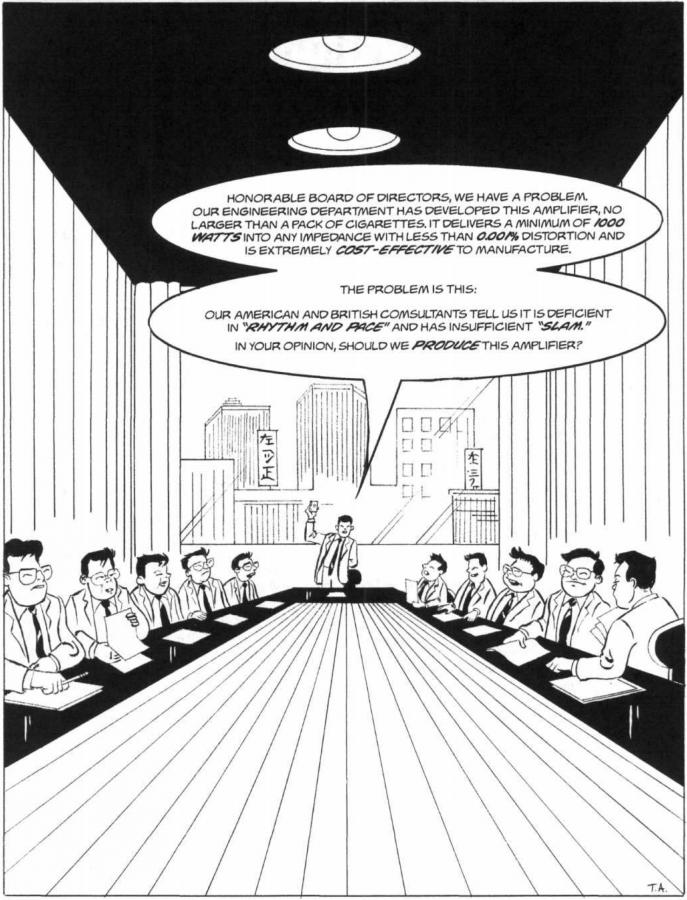The K&H O300D studio monitors gave you exactly what should have been delivered. Sound emanating from a virtual speaker exactly centered between the two physical speakers and on the same plane. The K&H monitors use trimmers to match the high-frequency drivers to precise tolerances. This gives them a wonderful ability to keep high frequencies tightly imaged into the phantom center. We have a pair of K&H O300 monitors and I have spent lots of time listening to them and comparing them to other studio monitors (see photo of Benchmark's listening room below). If you listen closely you will discover that the phantom image is several inches wide, it is not quite a pinpoint. I attribute this to the excessive distance between each of the three drivers in the O300D. The three-way design and the size of the drivers dictated a larger driver-to-driver spacing than you would find in a two-way nearfield monitor. In our listening tests, this diver spacing spread the width of the phantom image by a few inches. Each of the two-way monitors did better in this regard than the K&H O300. Nevertheless, at the very high end of the audio spectrum, the K&H were able to keep high frequency sounds well focused in the center. I attribute this to the very precise driver trimming in the K&H monitors. On some of the other speakers shown in the photo, cymbals and other high frequencies sounds tended to move to the physical speakers. The degree to which the high frequencies move is an indication of the accuracy of the tweeter matching.I once compared Mackie HR824 (the first version) with K&H O300D. Both are active studio monitors with wave guides. An old mono recording sounded wonderful on the Mackies, it filled the room and didn't sound much like mono. Switching to the O300D destroyed this impression immediately and the music seemed to come from a very narrow and smalll strip between the speakers.
All speakers were placed at the same L/R spacing and angles relative to the listening position. Distances were measured and laser aligned. It was an interesting listening test that was very instructive. We used lots of absorptive material to reduce the room effects.

